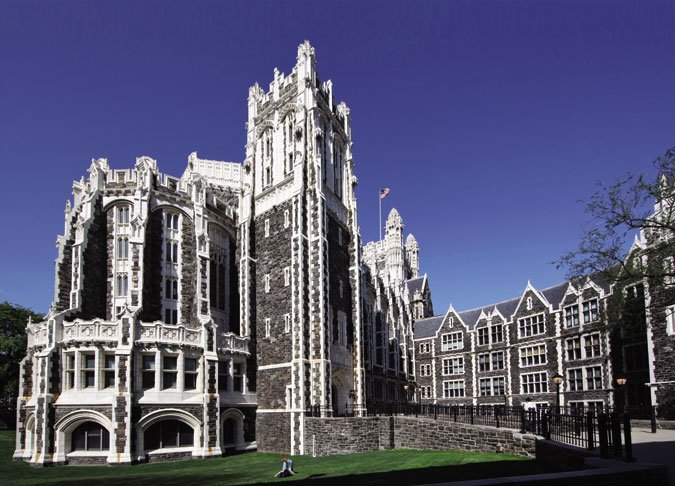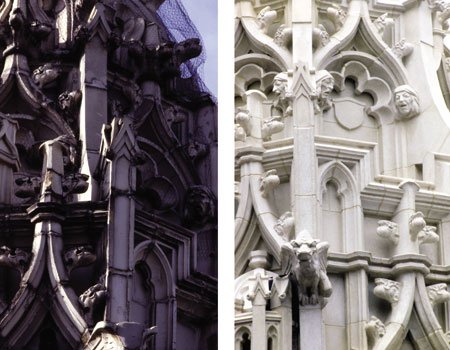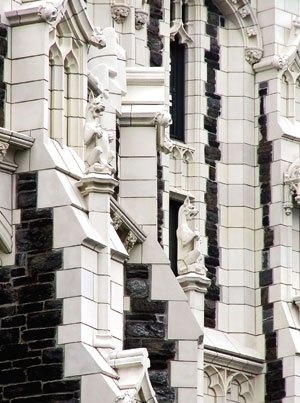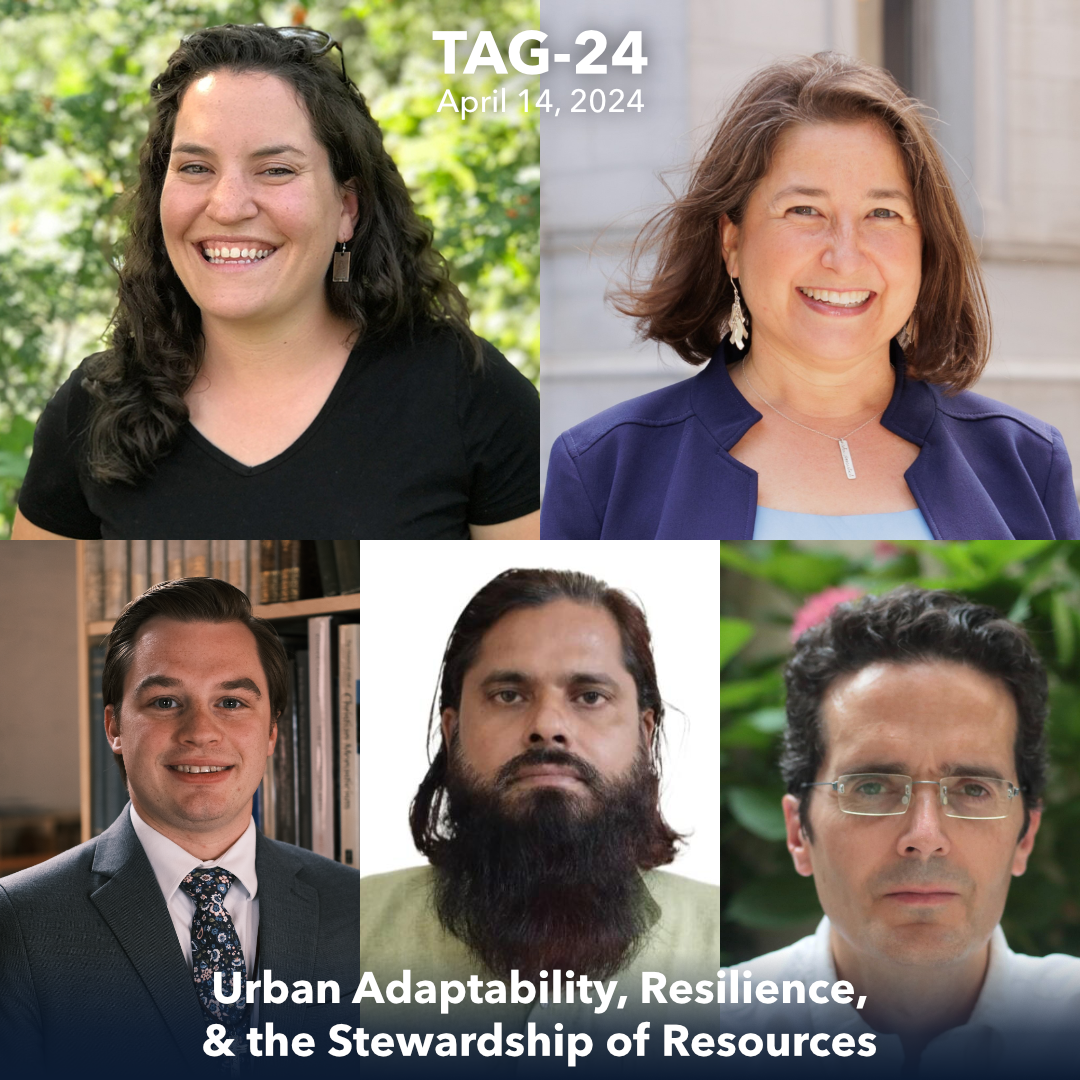
Designed by George B. Post and completed in 1907, City College’s Shepard Hall is in all probability the most faithful specimen of English Perpendicular Gothic revival architecture in the United States. The first structure to inhabit the institution’s Hamilton Heights campus, it was modeled on a cathedral plan, its main entrance within a bell tower on St. Nicolas Terrace that connects two flanking academic wings and a central great hall for assemblies. Like many of its Gothic predecessors, unfortunately, the building also featured certain flaws that, over time, led to severe deterioration in the building’s fabric and the threat of catastrophic structural collapse.

the team replaced some 70.000 pieces of deteriorated terra cotta (left) with the gfrc product (right), which could be used to mass-produce repetitive decorative elements.
|
Post constructed the hall primarily from local schist—stone quarried during the excavation of the site—and terra cotta, which makes up the decorative elements. He used the terra cotta, however, structurally, as if it were just another piece of masonry. While terra cotta is very strong under compression, it has almost no tensile properties. As a result, when water infiltrated the walls and as the building swelled and contracted with the changing seasons (it was built without expansion joints), the terra cotta could not handle the stresses as well as the schist, and so it began to crack, break up, and come loose. By 1986, when architecture firm Elemental (then The Stein Partnership) answered an RFP to restore and reconstruct Shepard Hall’s envelope, pieces of terra cotta the size of grapefruits had been falling off the building with regularity for some ten years. Only one third of the original material remained. The rest had been filled in with bricks and stucco.
From the outset, the architects decided that in replacing the terra cotta, they would employ a rain screen system with a light, thin-shell material fulfilling the decorative aspects and a separate material taking on the structural role. The material would also need to be mass-produced in order to meet the reconstruction schedule. Some 70,000 pieces of terra cotta needed replacing, 3,000 of which were completely unique sculptures—allegorical representations of academics, gargoyles and grotesques, and vegetative motifs. The team considered terra cotta, but the material was quickly ruled out since it would have taken decades to produce the needed pieces by the two manufacturers in the country who could do it at all. They settled on reinforced concrete (GFRC), basically a Portland cement with significant chemical variations. It uses only fine-grain aggregate, a small amount of polymer, glass, and carefully controlled sand.

the thin-shell replicas were bolted back to a new masonry structure, with soft joints between the new masonry and original schist.
|
A sprayed product about 3/4-inch thick, the GFRC offered the possibility of speeding up the fabrication of all of the repetitive pieces and keeping cost down. The sculptural elements took a little more time. Those that remained more or less intact were removed from the building, touched up, and used to form rubber-lined production molds. Those that had vanished were recreated from old photographs or extrapolated from fragments. The GFRC system offered a much higher level of precision than did the original process. To be as faithful as possible to the original, Elemental took care to introduce the imperfections characteristic of terra cotta, including tooling marks, irregularities on flat planes, and slight variations in the “white” color from piece to piece.
The team filled in the structural gaps left by the terra cotta with traditional masonry structure, and bolted each thin-film replica back to the new masonry. This allowed the creation of soft joints between each piece and the existing schist. When taken across an entire elevation, these small, soft joints comprise a de facto expansion-joint system capable of accommodating significant building movement.
In the course of replacing the terra cotta, the architects uncovered a number of other issues that needed attention. The bell tower was discovered to be in a state of structural failure. Steel supports in the existing masonry had corroded to the point of no longer being there. All that was holding it up was the terra cotta, some rubble stone, and a chicken-wire wrapper placed there to keep the gargoyles from falling onto students below. It was completely rebuilt, the cladding removed, a new precast, post-tensioned concrete structure inserted, and then the new thin-film elements attached. Elemental divided the project into ten contract packages, ordered according to severity of need, and tackled them when the budget became available. The firm is now finishing the ninth package. Although not among the gargoyles, the spirit of George B. Post might well sit smiling, twirling his Edwardian whiskers in hearty approval.



